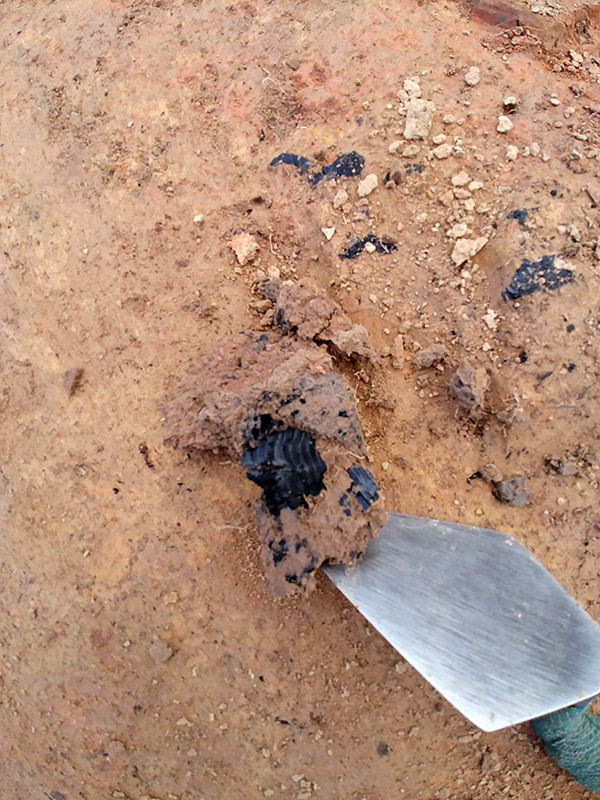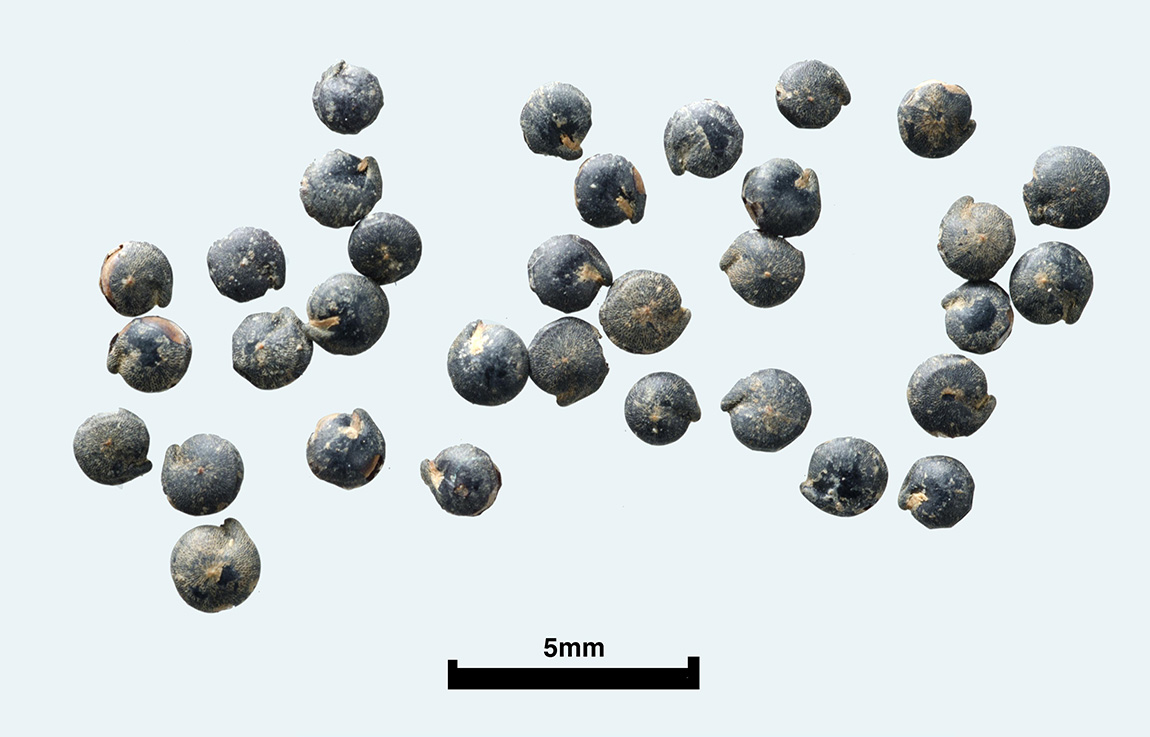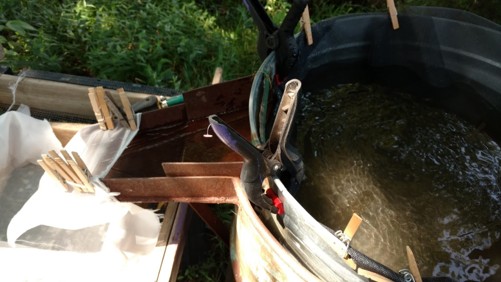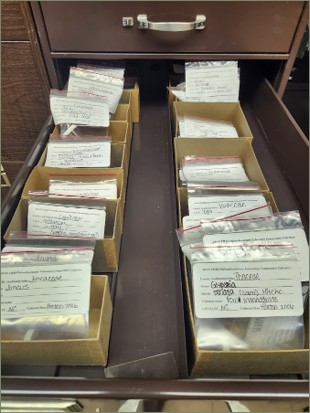Emily Beahm, ARAS-WRI Research Station
"Archeology is..." series - September 2025

Botany is the study of plants. Similar to zooarcheologists studying animal bones, paleoethnobotanists study plant remains from archeological contexts. Studying plants found in archeological contexts can tell us a great deal about how people lived in the past. Not only can plants tell us about diet, but they can also tell us about what the environment was like at the time, what kind of clothes people were wearing and other textile items they were using. Studying plants from archeological contexts can tell us about interactions between groups of people, cooking techniques, and the process of domestication.
Plant remains do not preserve for a long time under normal conditions here in Arkansas. Luckily for archeologists, there are some instances where plant remains are preserved so that they can be studied. If plant remains are burned in such a way that the organic material turns to carbon (carbonized), the plant fragment can potentially be studied. Charred wood (charcoal) can be found in archeological excavations. If the wood is found within a post, it can tell us about what kind of wood was used to build structures in the past. Cane is also sometimes charred and found in association with a structure. Charred nuts, charred seeds and charred corn cobs are also sometimes found archeologically and have the potential to be identified.
Plant remains may also be preserved if they remained in a consistently dry environment. This is the case for some dry bluff shelters in the Arkansas Ozarks. Dried grasses, seeds, bags, sandals, and baskets have been recovered from dry bluff shelters in the Ozarks.


Recovery of preserved plant material can also be challenging, since seeds and plant parts have the potential to be quite small, and are likely to fall through a standard quarter-inch screens that most archeologists use while excavating. Archeologists may use special recovery techniques to ensure a sample of the context being studied is examined for tiny plant remains. In some cases, archeologists take a soil sample to be processed later in the lab. A process called flotation uses water to separate tiny seeds from the other archeological material within a soil sample.
Identification of plant remains from archeological contexts can be difficult, especially if the remains are broken into tiny pieces. Comparative collections of known modern seeds can help paleoethnobotanists correctly identify archeological plant remains.

